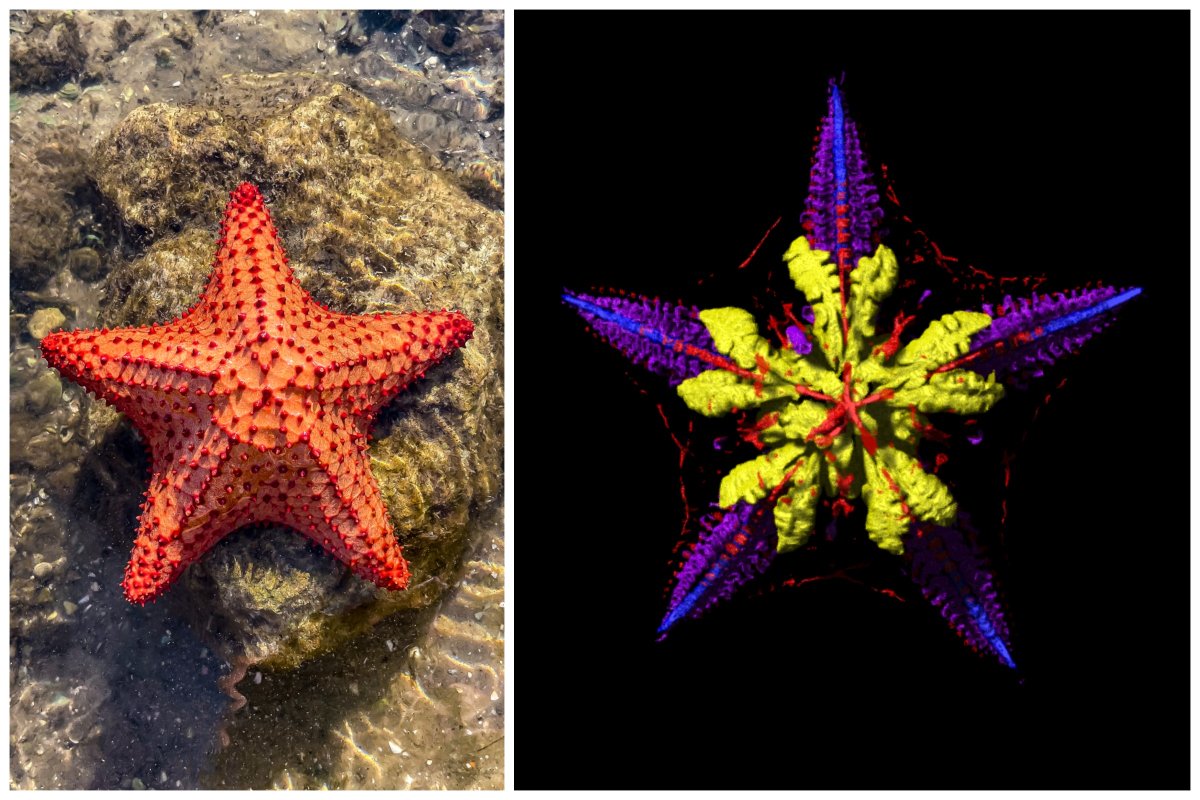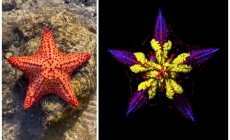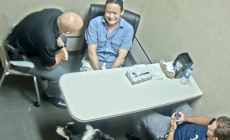-
Scientists Finally Solve Mystery of Where Starfish Keep Their Heads - November 1, 2023
-
A portion of Mulholland Drive, damaged by mudslides in winter storms, reopens - May 26, 2024
-
‘Maybe You Don’t Want to Win’ - May 26, 2024
-
Donald Trump Putting Law Enforcement in Danger: Attorney - May 25, 2024
-
Avoid the waters of these 5 L.A. County beaches this holiday weekend, public health officials say - May 25, 2024
-
Bawdy Comedy ‘Anora’ Wins Palme d’Or at Cannes Film Festival - May 25, 2024
-
Map Shows Heat Wave Zone Spread Into Five New States - May 25, 2024
-
Azusa police arrest suspected slingshot-wielding vandal - May 25, 2024
-
Donald Trump Hammers Judge Ahead of Jury Instructions - May 25, 2024
-
Sometimes U.S. and U.K. Politics Seem in Lock Step. Not This Year. - May 25, 2024
Scientists Finally Solve Mystery of Where Starfish Keep Their Heads
Imagine you are drawing a starfish—where would you draw its face?
Starfish have eyes at the tip of each of their arms, but the location of their heads has puzzled scientists for decades.
“Understanding how the bodies of echinoderms [marine invertebrates, including starfish, sea urchins and sea cucumber] relate to those of other animal groups has been a long-standing question without a clear answer for about as long as people have been studying these animals,” said Jeff Thompson, a lecturer and evolution expert at the U.K.’s University of Southampton.

Jaimie Tuchman/Getty/University of Southampton
Unlike other animals, the bodies of echinoderms are arranged into five equal sections. This is very different from the twofold left-right symmetry that we and many other animals display.
“In their bilateral relatives, the body is divided into a head, trunk and tail,” Thompson told Newsweek. “But just looking at a starfish, it’s impossible to see how these sections relate to the bodies of bilateral animals.”
In a recent study, Thompson and colleagues at Stanford University and the University of California, Berkeley, set about answering this question by investigating the body plans of sea stars at the molecular level.
“It has absolutely changed the way that I think about this group of animals, which I have been studying for the last decade of my life,” Thompson said.
Their results were published Wednesday in the journal Nature.
“With some animals, like the starfish, which look so different from other groups of animals, the only way to figure out how their bodies relate to the bodies of other animals is to look at the genes which control their development,” Thompson said.
The team investigated how different genes were switched on and off during the development and growth of a baby sea star. The researchers also used micro-CT scanning technology to understand the animal’s shape and structure in never seen before detail.
“When we compared the expression of genes in a starfish to other groups of animals, like vertebrates, it appeared that a crucial part of the body plan was missing,” Thompson said. “The genes that are typically involved in the patterning of the trunk of the animal weren’t expressed in the ectoderm. It seems the whole echinoderm body plan is roughly equivalent to the head in other groups of animals.”
This suggests that, over the course of evolution, starfish and other echinoderms may have developed their five-sectioned bodies by losing this central trunk section, allowing them to hunt and feed differently from other animals.
“In terms of adaptive advantages, having a fivefold symmetric, as opposed to a bilaterally symmetric, body plan might have allowed the animals to move or feed without being tied to any direction in particular,” Thompson said.
But other than proving that SpongeBob SquarePants’ Patrick Star is anatomically inaccurate, why else is this research important?
“Understanding how the bodies of one animal group relate to those of others is crucial for almost every aspect of evolutionary biology,” Thompson said. “Identifying structures which evolved from a common ancestor, what we call homologous structures, is the foundation of how we construct evolutionary trees. In turn, we can use these evolutionary trees for everything from figuring out rates of evolution to monitoring biodiversity for conservation efforts.”
He continued: “I think the next steps will be to explore the sometimes controversial fossil record of the echinoderms, to see if we can find any transitional forms which might shed further light on the evolution of their bizarre body plans.”
Uncommon Knowledge
Newsweek is committed to challenging conventional wisdom and finding connections in the search for common ground.
Newsweek is committed to challenging conventional wisdom and finding connections in the search for common ground.
Source link
































